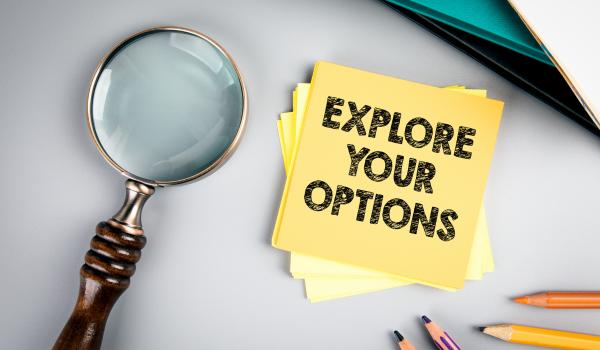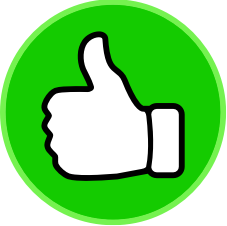Thinking about filtering your tap water? You’re not alone. Whether it’s the taste, smell, or concern over contaminants, more homeowners are turning to filtration systems—and the good news is, it doesn’t have to cost a fortune.
There’s a wide range of options—some simple, some more advanced—and they don’t all break the bank.
Let’s get to it and find what’s right for you.
💡 Key Takeaways:
- Whole-house filter systems typically cost $300 to $800 for basic models, or $1,500 to $3,000+ for premium systems.
- Installation averages around $1,200, depending on system type and plumbing complexity.
- Annual maintenance and filter replacements run between $100–$200.
- Upgrades like UV light or multi-stage filters can add to the total cost.
- Other cost factors include system type, materials, brand name, and the difficulty of installation.
Do You Need a Filtration System?

A good filtration system can help with that. It removes not only contaminants but also the stuff that affects taste and smell. If you’re buying bottled water just to avoid your tap, a filter could save you money fast.
Read: 7-Signs you might need to filter your water
Point-of-Use Vs Point-of-Entry Water Filters

There are two main types of filtration systems:
- Point-of-entry (POE) filters treat all the water coming into your home.
- Point-of-use (POU) systems, like under-sink or faucet filters, only treat water at one tap.
Whole-house systems (POE) cost more upfront but can be more cost-effective over time—especially low-maintenance options like single-tank backwash filters, which clean themselves.
Cartridge-based systems are cheaper to buy but require more frequent filter changes—sometimes several times a year.
Both options work well—it really depends on how much water you want to filter and how much maintenance you’re up for.
Water Purification System VS a Filter System

The terms water filter and water purifier are often used interchangeably, but they’re not the same. Read more here
- Filters remove impurities like sediment, chlorine, and some chemicals—but most don’t eliminate bacteria or parasites.
- Purifiers go further. They remove nearly all contaminants, including microorganisms, making water virtually pure.
If you’re on city water, you likely don’t need a purifier—municipal systems already handle pathogens. In that case, a filter is usually enough to improve taste and remove things like heavy metals or chlorine byproducts.
Purifiers are best when you’re dealing with untreated water (like from a well or off-grid source), but they’re usually point-of-use systems, not whole-home setups.
Water Filtration Systems Cost by Type
Filtration systems range from basic to high-tech—and so do the prices. Here’s what you can expect to spend based on system type:
| Filter Type | What It Targets | Average Cost |
|---|---|---|
| Carbon | Chlorine, bad taste, odors | $300 – $1,800 |
| Sediment | Dirt, sand, rust, debris | $30 – $300 |
| KDF | Heavy metals, sulfur, bacteria | $275 – $500 |
| UV Disinfection | Bacteria, viruses, microbes | $300 – $1,200 |
| Reverse Osmosis | Most contaminants, fluoride, minerals | $300 – $1,800 |
| Water Softener | Hardness minerals (calcium & magnesium) | $700 – $1,800 |
There’s no one-size-fits-all system. Some filters are designed to stand alone, while others work best as part of a multi-stage setup. The good news? You can build exactly what you need—and skip what you don’t.
Not sure where to start?
- Bad taste or chlorine smell? A carbon filter is usually all you need.
- Rust-colored stains? Add a sediment filter or iron filter to the mix.
- Dealing with hard water? A softener will protect your plumbing and appliances.
- Concerned about contaminants like fluoride or lead? Go with a reverse osmosis system.
- On well water? You may need a combo setup with sediment, carbon, and UV filtration.
Your best bet is to know your water and to have it tested. This way you’ll get exactly what you need for your unique situation.
Whole-House VS Point-of-Entry Filter Cost

Whole-house systems can run anywhere from $700 to $3,000+, depending on type and quality.
A premium single-tank setup might cost $2,000 but could last a decade or more with little to no maintenance—making it more affordable in the long run than a cheaper system that needs constant upkeep.
Point-of-use (POU) systems—like pitchers, faucet filters, or under-sink units—are more affordable to buy:
- Pitchers and faucet filters start around $30
- Undersink systems range from $300 to $600
- Reverse osmosis systems run $500–$700
But long-term costs vary. RO filters, for example, may need membrane replacements every few years, which can cost $100–$150 each time.
Testing Your Water

You could buy a high-end, do-it-all filtration system—but without testing your water first, you might be spending way more than necessary.
A simple water test will tell you exactly which contaminants are in your water and which filter will actually solve the problem. Why drop thousands on a whole-house system if a $40 sediment filter would do the trick?
Testing is easy. You can:
- Bring a sample to a certified local lab
- Or use a mail-in home kit like SimpleLab’s Tap Score, which walks you through the process and includes personalized recommendations
If you want the best results without guessing, testing first is always the smarter move.
Is a Whole-House Water Filter System Worth the Money?
If your water test shows harmful contaminants, then yes—a filtration system is absolutely worth it. It’s not only safer than drinking straight from the tap, but also far cheaper than relying on bottled water long-term.
Filtered water at home is better for your health, your wallet, and the planet. Refillable bottles and clean tap water can save families thousands over time.
Bottom line: If you need one, a whole-house system isn’t just a smart buy—it’s a long-term investment in better water, every day.
Should I Hire a Professional to Install a Filtration System?

If you’re handy, many filtration systems—especially under-sink or basic point-of-entry (POE) units—can be installed without a plumber. Some connect directly to your cold water line with no major changes to your plumbing. DIY installs can save you $200–$400 in labor.
Whole-house systems are more involved but still manageable for confident DIYers. Most take a full day to install, and clear instructions make the job straightforward.
That said, there are times when hiring a pro makes sense:
- Low water pressure? A plumber can optimize flow during setup.
- Tight spaces or complex plumbing? Professionals have the tools and tricks to make it work.
- Installing multiple filters or a full water treatment system? Let an expert handle the layout.
Professional installation typically runs $400 to $1,500, depending on the system and setup. You may save by bundling the install with your filter purchase from the same supplier.
Tips for Controlling Water Filtration System Costs
Point-of-use (POU) filters are already affordable, and the best way to save is to buy cartridges in bulk. But for whole-house systems, there are a few smart ways to keep both upfront and long-term costs down:
1. Choose a System with a Bypass Valve
Bypass valves let you switch between filtered and unfiltered water with a twist. No need to use filtered water to wash your car or water the lawn. That simple feature can extend the life of your system and save money on maintenance.
2. Stay on Top of Maintenance
It might seem backward, but regular maintenance can lower your long-term costs. For example, a cheap sediment filter can protect more expensive filters in your system by catching debris before it causes buildup or clogs.
3. Think Long-Term
If your water test shows lead or other serious contaminants, get the best filter you can afford now. But if you’re planning ahead, consider a full system that meets both current and future needs. Installing multiple components—like a softener and filter—at the same time is usually cheaper than adding them later. It also avoids compatibility issues down the road.
Final Thoughts
Don’t let what water filtration systems cost stand between you and the better water quality you deserve. There are options for every need and budget.
 151 people found this helpful. Was this guide helpful to you?
151 people found this helpful. Was this guide helpful to you? 

